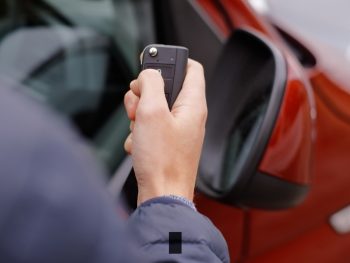Extensions forced on fleets by both the pandemic and much-delayed order times for new vehicles have probably changed company car and van replacement cycles forever, according to FleetCheck.

Its data reveals that around a year has been added on average across the board to fleet cycles – which previously stood at 3-4 years for cars and 4-5 years for vans.
And such extensions are not being viewed as a one-off, but rather a longer-term switch, according to Peter Golding, managing director.
He explained that fleets had realised vehicles had the potential to be operated for markedly longer than had in the past, and had learnt a new skillset to enable this to be done economically and efficiently.
“However, there are also some outliers who have taken more dramatic steps. We have one client who has extended their policy for cars from three to five years in a single move.”
FleetCheck warned last summer that fleets were facing worst-ever delays and the situation has markedly worsened since then as the chip shortage has deepened and the Russian invasion of Ukraine has deepened supply chain issues.
Last week saw the BVRLA report how supply shortages are hitting the fleet sector hard, with lead times of up to a year now the norm for all vehicle types as manufacturers prioritise retail channels. And Fleet Evolution has also highlighted that the worst new vehicle supply problems in a generation are causing the fleet industry huge problems, including sky-rocketing daily rental rates and lead times that are the longest in living memory.
FleetCheck’s Peter Golding advised that there were two key areas for businesses to consider when looking at the potential for permanent extensions – maintenance and human resources (HR).
“The maintenance aspect applies to any replacement cycle. The longer you operate a vehicle, the more potential there is for things to go wrong. This means that your service and maintenance policies need to be watertight.
“For a start, moving beyond three years takes most cars and vans beyond the manufacturer warranty as well as moving you into the first MOT. This creates a number of potential cost and safety points that will need to be carefully managed.
“Also, there is certainly a tendency for the cost of keeping a car or van on the road to escalate as it enters year four. There needs to be consideration given to the impact on not just whole life costs for owned vehicles but monthly rates for leased ones.”
Golding said that keeping on top of these points – both in terms of controlling costs and ensuring roadworthiness – required at-hand data that enables fleets to understand their situation at any given point in time and to adopt the right policies.
“Additionally, the HR angle is very particular to each employer but, in some industries and some job roles, it is very much expected that a new car will be provided every three years. At a time when recruitment and retention is markedly difficult, this is a genuine issue.”
He added that the arrival of electric vehicles on fleets was also playing a role in the process of extending cycles.
“There is a general perception, which appears to be correct based on our experiences to date, that EVs undergo less wear and tear than their petrol and diesel counterparts, and are likely to remain in a better mechanical condition for longer.”

